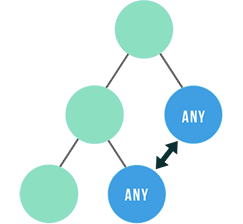I was on Meteor 1.3.5.1, and just upgraded to 1.5 without much of a hitch. I’ve done nothing else but run meteor update.
Now what? I’m trying to convert my application from the old way, 1.2 days, to the new way, React/Redux/Dynamic Importing and ES6.
What are the steps I take to visualize what is loaded on the client? What do I need to do in terms of import statements that will allow me to “dynamically” load (for now) Blaze templates (and other stuff)?
The following is a collation of what I’ve found so far:
-
Read the 1.5 announcement.
-
Read the 1.5 release notes.
-
Read the 1.5 Meteor guide.
-
Read about Promises and async/await in Meteor, AND Using Promises on the Client in Meteor.
-
Blog article on Dynamic imports in Meteor 1.5.
-
Watch Ben Newman on Dynamic import in Meteor 1.5 Beta.
-
Watch Lukasz Jagodzinski on Meteor 1.5 Dynamic Module Imports.
-
Listen to Transmission Ep 18: Meteor 1.5 & Migrating Atmospher Packages to NPM.
-
Chrom 59’s new Code Coverage can help show how much code is used vs how much is loaded.
-
do I now install the bundle-visulizer and the standard-minifier-js package?
-
It seems one cannot import server to client or client to server, even under the imports directory? How then does the client import publish functions or metoer.methods?
-
Are there plans for a new “todos” example app based on Metoer 1.5?
-
Is it true that import modules are singltons on the client (complient with ES7), and NOT singltons on the server (Nodejs style)?
-
What is the meteor-node-stubs lib?
-
Worth reading about Peer npm dependencies
-
It seems like a good Idea to review this Bundle Optimization post
-
Check out the comment thread on migrating to 1.5
-
Looks like I should install the reify lib in order to get nest imports?
-
If you’re using a non-dockerized version of mup, this lib works with 1.5
-
Looks like Google’s Lighthouse can help you figure out how to optimize your site’s performance.
-
Should I upgrade from the old FlowRouter to FlowRouter extra to get dynamic import features? It seems vinilla FlowRouter also works with dynamic imports out of the box.
-
What are the strategies for spreading dynamically imports throughout your app (I only want the client to get what they’ve asked for and what is needed and nothing more)?
-
What is the best way to take out all the “Meteor packages” that use to be included by default, for example Moment.js/Underscore/JQuery/XmlBuilder, and add them back again as npm packages?
-
Any tips on adding Reactjs/Redux to my project and have it run side-by-side with Blaze for the time being? I want to take my application screen by screen and convert it over to React.
Also, a big thank you to MDG for allowing for such a smooth update from 1.3 to 1.5, impressive.

